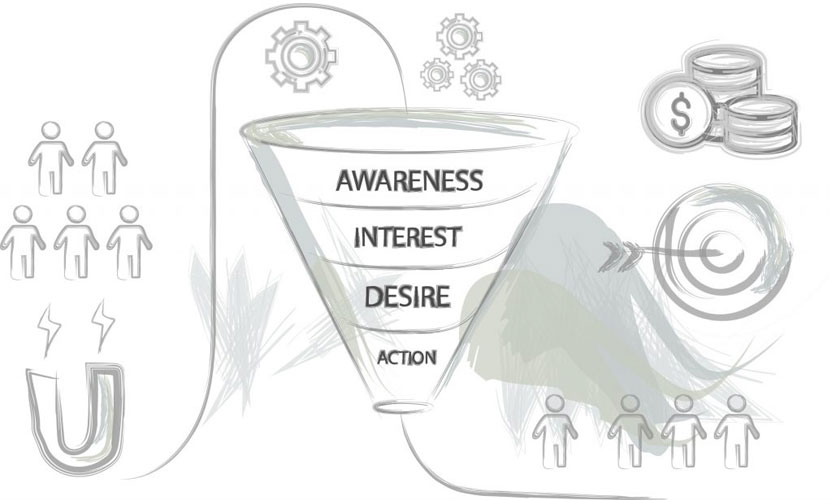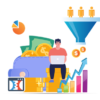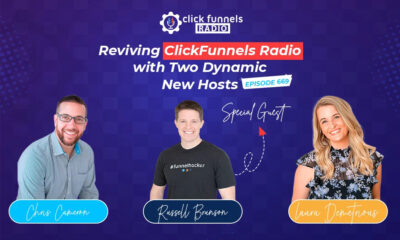Reviews
Marketing Funnel Hacking: 8 Steps, Tips & Examples
Marketing Funnel Hacking: You know you need a marketing funnel. After all, why else would you be here?
There’s just one problem: Where do you start?
Actually, there’s way more than just one problem. Depending on the maturity of your business and marketing skills, a host of problems surround you …
- If you’re just getting off the ground, it might be questions like: “What is a marketing funnel? How do I create one? Which stages do I need to pay attention to?”
- If you’re already selling, they’re probably along the lines of: “How do I build more funnels, faster? What growth hacking and digital marketing tools can help?”
- And, if you’ve hit a wall: “What are my competitors doing that’s making them successful? Can my business use those same tactics? How do I discover them?”
Answering those questions — and setting you up for success — is exactly what this detailed guide to marketing funnels is all about …
- What Is a Marketing Funnel? Stages & Traffic Tips
After defining marketing funnels, you’ll learn how to drive people into and through each stage of the funnel with six traffic tips. - Why You Shouldn’t Create a Marketing Funnel: ’Hacking’
Here, we’ll explore why funnel hacking is the fastest, easiest way to get the results you want. And, how it compares to other marketing tactics. - How to Build Your Marketing Funnels: Step-by-Step
Finally, we really get into the practical elements: 8 steps to quickly get your marketing funnels up, running, and optimized.
Feel free to jump ahead to whatever section will help you the most (that’s what those links are for). Or, let’s get started with first things first …
What Is a Marketing Funnel? Stages & Traffic Tips
By definition, a marketing funnel is a strategy or framework designed to turn cold prospects into long-term customers by funneling them through different stages of awareness, interest, desire, and action.
“Funnel” means you’ll begin with a large audience (top of the funnel) and eventually narrow them down to a smaller group of qualified leads (middle of the funnel) and, then, to an even smaller (bottom of the funnel) group of customers.

The ultimate goal isn’t to convert someone nor to make a single purchase. Instead, it’s bigger than that: you want to build multiple sources of high-value prospects and increase customer lifetime value.
Marketing funnels are usually divided into three parts:
- Top of the funnel (ToFu). This is everyone in your target audience.
- Middle of the funnel (MoFu). These are your potential customers, folks who have shown an interest in what you’re offering.
- Bottom of the funnel (BoFu). These are your new and existing customers, people who have taken out their credit cards and bought from you.
The key to an effective marketing funnel is this: Engage with and provide increasing value to your prospects throughout each stage.
Another way marketing funnels have been structured is around emotions and actions.
This structure is known as AIDA …

Awareness, Interest, Desire & Action (AIDA)
Elias St. Elmo Lewis developed this model in the late 19th century. It’s since become the backbone of almost every successful marketing campaign and funnel in the business.
But why is it so effective?
Top, middle, and bottom structure the funnel from a business perspective. AIDA gives you a blueprint to take potential customers through an emotional journey of making a purchase.
If a marketing funnel was a human body, the ToFU, MoFu, and BoFuwould be the brain … and AIDA would be the heart. Let’s put the two together.
Top of the Marketing Funnel: Awareness Stage
The first stage of the marketing funnel is where you catch the eye of new audience members through content marketing or a valuable baseline offer (via paid advertising).
You want to position your message not just to attract high-quality prospects but also to turn away poor-quality prospects.
Think …
- Which websites and forums do my high-value prospects hang out in on the internet?
- Which social networks and what kinds of content do they interact with the most?
- What free or lower-cost offers can I entice to them with to take initial steps?
At this stage, you want to qualify who within your target audience is ready to buy. Needless to say, if you can’t get prospects interested in your entry-level offers, there’s no way you’ll be able to get them to buy your big-ticket items or services.
By meeting your target audience where they are (and where they’re comfortable engaging with your brand), you can get them to enter your funnel on their terms.
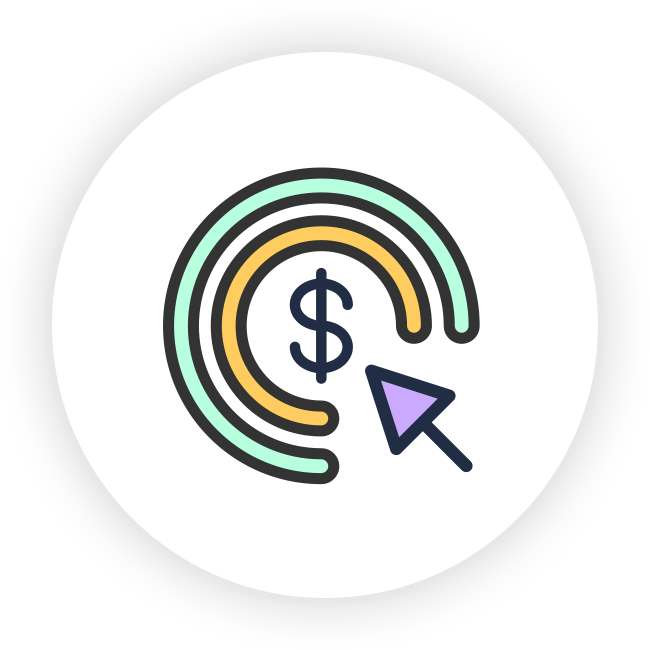 Traffic Tip #1: Use PPC Ads
Traffic Tip #1: Use PPC Ads
If you’ve ever used Google, then you’ve probably seen pay-per-click (PPC) ads. PPC ads often show up first, near the top of search results or as banner display ads on other websites. Here’s the basic idea behind them:
- You pay a certain amount of money every time somebody clicks on one of your online ads.
- The ads go up after you bid on ad placement and keywords. The more you bid, the better the placement.
The cost of PPC ads vary. They can be as low as a few cents to several dollars. It all depends on the keywords and your competitors who are bidding against you.
Just like any advertising, your PPC ads on Google or elsewhere need to be relevant to what you’re selling. And they need to speak to the audience you want to attract at the right moment.
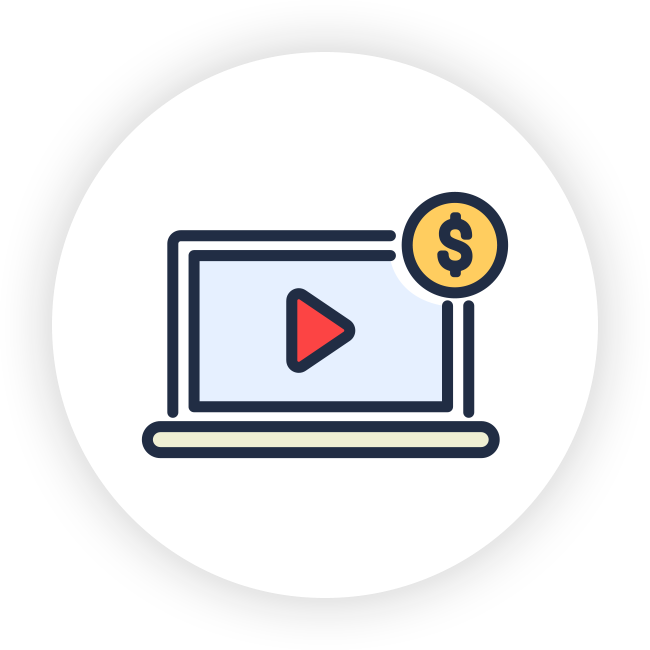 Traffic Tip #2: Try CPV Ads
Traffic Tip #2: Try CPV Ads
Another type of ad you might want to try out is called CPV, or cost-per-view ads. Similar to PPC ads, you pay a certain amount every time someone views your CPV ad.
The big difference is that CPV advertising revolves around video. This means that you don’t have to pay if someone watches a few seconds of your ad and then clicks away. It only counts if the viewer watches a certain amount of the ad or interacts with it in some way, such as clicking on an accompanying link.
In the case of Google Ads, you pay only after someone watches your ad for at least 30 seconds.
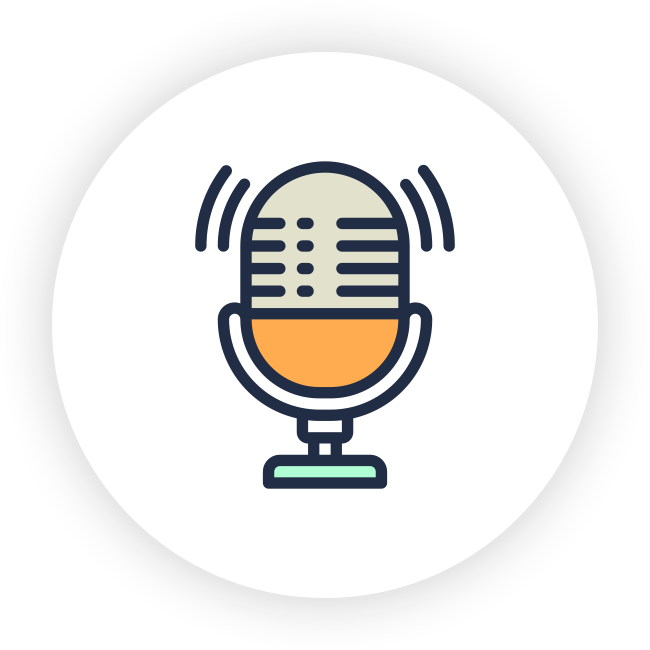 Traffic Tip #3: Start a Podcast
Traffic Tip #3: Start a Podcast
In your niche, you probably have opinions on a variety of fascinating and engaging subjects. Starting a podcast lets you work with influencers in your industry that you’ve always wanted to work with.
Getting someone on your show lets you collaborate with major players in your niche … signaling to your target audience that you are a major player in your niche, too.
With a good podcast, you don’t have to constantly be in sales mode. You’ll be able to show customers the human side of your company and get them to trust you more.
 Traffic Tip #4: Leverage Social Media
Traffic Tip #4: Leverage Social Media
Social media can be a powerful tool to promote your funnel. It’s an inexpensive, often free, way to show people the value that you have to offer. Facebook, Twitter, Instagram, Pinterest, and more have billions of active users. The more people you can reach, the better the chances they’ll enter your funnel.
Different platforms have different audiences. Instagram, for example, revolves around images and attracts visual creators. LinkedIn, on the other hand, is more about professional connections, and attract a lot of entrepreneurs (or people who want to be like them).
Your social media posts need to resonate with your intended audience.
You can share a video you created. You can give a special discount to your followers. But you have to remember to focus on engaging with your audience on social, to get some sort of reaction from them.
This means that simply copying and pasting the same post on all your channels isn’t a smart tactic. Your message has to fit the platform
Tailor your posts to your audience, and they’ll respond by entering your marketing funnel.
 Traffic Tip #5: Write Blog Posts
Traffic Tip #5: Write Blog Posts
One of the best ways to create quality content for your marketing funnel is by writing blog posts on a consistent basis. If you provide value on your blog and establish yourself as a voice of authority in your niche, people will be more likely to enter your marketing funnel.
The power of posts, however, extends far beyond maintaining your own blog. You can also guest blog for other people, tapping into their audience and their influence. Sometimes running your own blog can be difficult, but if you guest blog on other sites, you’ll find you can still reach a lot of people.
Here’s how:
- Pick a site that fits the niche of your business. This lets you know you’ll be reaching the right audience.
- Include links to your marketing funnel. Don’t make people look too far for what you offer!
- Include keywords related to your business, product, and niche. This helps you show up on Google searches.
 Traffic Tip #6: Lead Magnets & Bait
Traffic Tip #6: Lead Magnets & Bait
To get traffic into your funnel, each of the following two stages will require the use of a low-risk offer to hook prospects. This is called “bait.” But don’t let the name turn you off. The best kinds of bait are low-cost to you and high value to the recipient. These can be things like free content, webinars, a course delivered as an email sequence, or product samples.
An even better representation of the funnel looks like this on the right:

Middle of the Marketing Funnel: Interest & Desire
Once a prospect takes the bait, they move down your funnel to the Interest and Desire.
In the Interest stage, you begin to forge a deeper relationship. Empathy and trust are at a premium: empathy that you understand their problems and trust through credibility, preliminary solutions, and even “quick wins.”
Desire follows where prospects warm to the idea of making a purchase to solve their problems. Here you introduce your frontend offer through …
Squeeze Pages & Landing Pages
Squeeze page copy, the words themselves, need to clearly communicate the value of your offer. You also prime your audience with a sense of urgency to take immediate action.
Squeeze page images and videos depend heavily on the value ladder level you’re currently targeting. For example, if you’re aiming to get a new prospect to commit to a low-priced offer, you can quickly introduce them to your brand and discuss the “quick wins” they can expect to experience right away.
On the other hand, if you’re trying to make a final sale on a higher-priced product, you might decide to go the video sales letter or long-form sales page route.

Those who are on the cusp of making a more costly purchase will want as much info as you can give them. Fortunately, they’re more willing to stick around long enough to be convinced to do so.
Squeeze page social proof should be used to reinforce the claims you’ve made on your squeeze page. Get as many case studies and testimonials that cover as many customer use cases and demographics as you can.
Squeeze page call-to-action needs to be crystal clear on what your audience needs to do to receive it. Make sure your CTA stands out from all other elements of your landing page.

Bottom of the Marketing Funnel: Action
Action, the final stage of the marketing funnel has prospects deciding to purchase (or not purchase) the brand’s premium product or service. You’ll need to reinforce the value of your offer, as well as the downsides of not making a purchase.

Depending on what you’re selling and who your target audience is, you’ll want to tailor each stage of your marketing funnel(s) accordingly.
- A low-price and low-risk offer that provides value to new customers. This lets them solve surface-level issues with minimal investment.
- Once your prospective customers have taken you up on your bait offer, you’ll want to send them directly to a landing page or squeeze page showcasing your premium offer.
- You then simultaneously follow up with email offers for that premium offer or other products and services. This is a practice known as “funnel stacking.”
if you’re able to keep your prospects’ attention and effectively communicate the true value of your offer, they should be interested in the premium product or service you have for them at this point.
The problem, these steps may take a long time to get right. This is where funnel hacking comes in.
Why You Shouldn’t Create a Marketing Funnel: Hacking (Instead)
Funnel hacking is the process of strategically investigating the sales and marketing process of your competitors and then using that framework to build, test, and optimize your own.

Why Should You Know How to Hack Marketing Funnels?
Funnel hacking is one of the easiest and most crucial ways to grow your business. Being able to go deep into your competitor’s marketing funnel and reverse-engineer what they’re up to, you can begin to test their strategies within your own business. In an online business, this can be anything from landing pages, price points, email sequences, and even retargeting ads.
It’s common knowledge that split testing various elements of your marketing funnel can yield great results, but testing blindly is a slow and sloppy process, agreed?
By taking advantage of the culture of funnel hacking and getting into the thick of your competitor’s processes, you can really see how successful they have been, and start to see similar results within your own business. While this won’t happen immediately, you’ll begin to see trends in what’s working and what’s not a lot faster than testing floating ideas from scratch.
On some level, this funneling occurs even if you don’t have intentional marketing funnel stages in place. By taking a strategic approach, you’ll dramatically increase the number of customers you end up generating.
But what about growth hacking? Lead generation? And email marketing? Here’s a quick primer on how those compared …
Different Approaches to Hacking Marketing Funnels

Growth Hacking vs Marketing Funnel Hacking
Growth hacking is a catch-all term for finding a repeatable sales & marketing system that accelerates a business’ growth. It covers both the product and marketing sides of the business. Funnel hacking falls under the “marketing” part of the equation.
They both use heavy testing across multiple marketing and distribution channels to figure out what works and what doesn’t.
The difference is that a growth hacker might want to grow the business in terms of users, downloads, or revenue, with profit as a secondary measurement. A funnel hacker, on the other hand, is obsessed with how much profit the funnel is throwing off.
For example, if a marketing funnel is spitting out $2 in sales for every $1 in ad spend, then a funnel hacker won’t have any problem pouring $1,000,000 dollars into the funnel. They can rest assured they’ll make at least another $2,000,000 back.
In contrast, a growth hacker might focus on getting the most number of people with the least amount of money, regardless of how much bottomline revenue the funnel actually makes.
Some people would even say that funnel hacking is more important than growth hacking.
Lead Generation vs Marketing Funnel Hacking
Lead generation and funnel hacking are complementary ways to grow an online or offline business.
Lead generation is about capturing information — voluntarily capturing things like email address, phone number, job title, business size, location, etc. — that you can use to sell to people later. Funnel hacking helps you figure out what has worked for your competitors and apply that to your business.
With lead generation, a landing page is the face of your business’ marketing funnel: the first impression and entry point. For more information on how to build a great lead generation website, check out this article.
Email Marketing vs Marketing Funnel Hacking
If lead generation is the frontend of your marketing funnel (the “face”), then email marketing is the backend.
Once you have a visitor’s contact information, email should be their primary guide through the other stages. Similar to growth hacking and lead generation, you can take note of what your competitors are doing and hack your way to a successful email marketing campaign.
Also similar is the supporting role email plays. Rather than a separate strategy, your email funnel should serve like a funnel within a funnel focused primarily on moving subscribers from desire (D) to action (A):
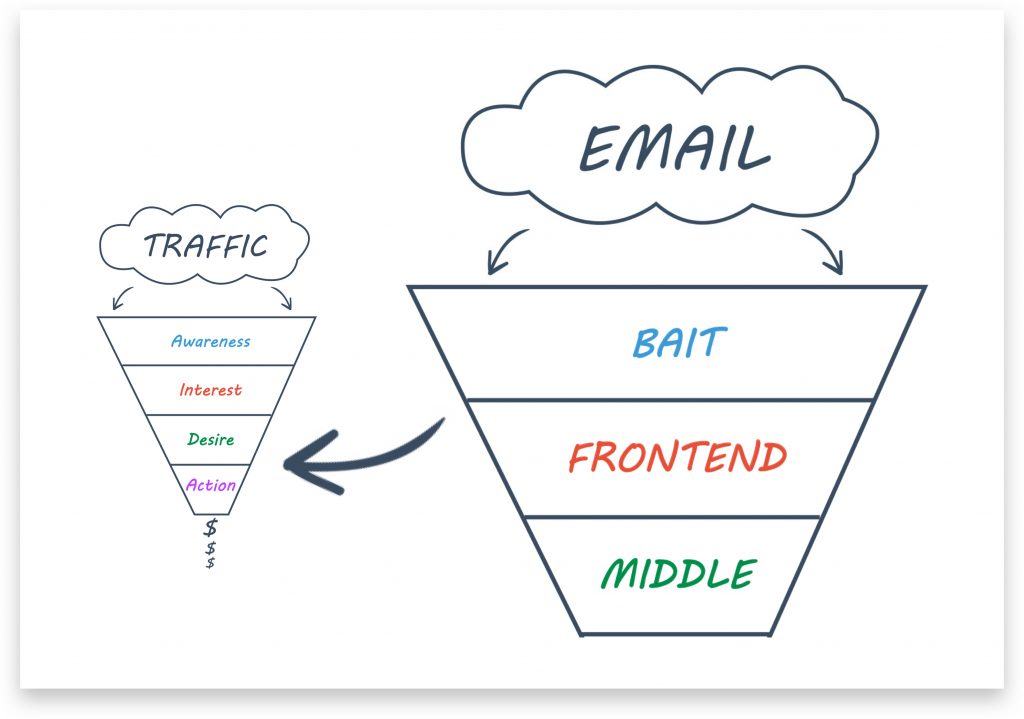
How to Build Your Marketing Funnels: Step-by-Step
While there’s no right or wrong way to begin to funnel hack your way to more profits, here’s a simple road map for you to follow which will allow you to really take advantage of funnel hacking.

1. Make a List of Competitors
The very first thing you’ll need to do is make a list of all of your competitors — direct and indirect. They’ll both have concepts that are working in your market in some way, shape, or form.
2. Screenshot Everything
For now, you won’t be able to see much on the outside of your competitor’s website. The problem is, most people stop there. But here’s the thing: the website is simply a shell for all the juicy, money-generating mechanisms happening on the inside.
But, that doesn’t mean it’s useless.
First, download a screenshotting tool that will allow you to easily screenshot website pages (full pages from top to bottom). Start saving them on your computer. Our tool of choice is Awesome Screenshot. Greenshot is a good one, too.
Next, create a New Folder called <Competitor Name 1>. Then start taking full-page screenshots of the pages that you visit. Place them into the folder you’ve created for that website.
Be sure to either create sub-folders or rename the images to thread them to the web pages they’re pointing to. Otherwise, it’s very easy for it to get messy and lose track of what’s going on.
What we generally do is setup folders along the lines of:
- Competitor Research Folder Structure
- Front End Funnel Landing Pages
- Backend Funnel Landing Pages
- Ad Creatives
- Retargeting Ad Creative
- Other

3. Start Building Your ‘Funnel Hacking Bible’
Now that you’ve taken the screenshots of your competitors’ homepage, it’s time to analyze.

It’s time to start building your “Funnel Hacking Bible” — the document where you put together all of our ideas, strategies, and notes that you want to implement into your existing funnel.
Start by opening a Word Document or Google Doc and start taking down some of the key trends you see. For example:
- What type of copywriting do they use in their headlines?
- What colors do they use where?
- Are buttons located above the fold or below the fold?
- Do they have videos or just text?
- Do they list benefits, features, or both?
- Do they include social proof? What kind?
- Are there any pop-ups during exit intent?
- Is the header section of the site fixed?
- Is there a full sign-up form or just an email opt-in?
- Do they mention prices for their products?
- If so, what are their price points?
As you have multiple websites open from the same industry, you’ll begin to see patterns. You’ll be able to contrast what you are doing and not doing vs. what they’re doing and not doing.
Each of these trends should be noted in your Funnel Hacking Bible (FHB).
4. Track Their Tools
The sales or home page is just 20-30% of the picture. This is because to drive and convert traffic, marketers use a variety of tools and resources to be as effective and profitable as possible. Here’s what we want to know:
Which tools are they using in their business?
This way we can also use to see if they can help make us profitable.
To find this out, you’ll need to download two more Google Chrome Extensions.
1. Ghostery sees the “invisible” web, detecting trackers, web bugs, pixels and beacons placed on web pages by Facebook, Google and thousands of other companies that gather information about your internet activity.

While this app is primarily designed to stay hidden from trackers, it’s also a great tool to highlight to marketers which trackers and programs are being used on by competing businesses.
2. BuiltWith Technology Profiler allows you to — with a simple click of an icon — see exactly what tools and technology a site is using.

Now that you’ve installed both of these tools into your browser, reload your selection of competitor’s websites and you’ll be able to see all of the tools and tracking which is taking place for every visitor who hits their website.
This will begin to answer some of your traffic and conversion questions like:
- Do they use retargeting?
- What about Google, Facebook, or other platforms?
- Do they use any conversion tracking software?
- What other tools are in their “tech stack”: email provider, personalization, loyalty programs, pop-ups, etc.?
Again … the list goes on. Some sites have 5-10 trackers. Other sites have 40+ scripts running in the background.
All of this should go straight into your FHB as you begin to build a web of information from your competitors.
5. Use Advanced Competitive Intelligence Tools
Ghostery and BuiltWith show you which technology your competitors’ websites run on. But we also want to know where your competitors are getting their traffic. To find these real game changers we’re going to need to move beyond plugins into some competitive intelligence tools.
These tools uncover what’s happening in the market:
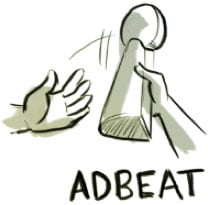 AdBeat or WhatRunsWhere
AdBeat or WhatRunsWhere
You can see anything from how many days they’ve been spending money and running a particular advertisement, all the way to the creative and landing pages they’re sending their paid traffic to.
 SEMRush
SEMRush
This tool gathers paid and organic insights on your competitors. Some of the features include displaying, search positions & changes, ad copy, video advertising, backlinks, estimated traffic expenditure, keyword research and much more.
 SimilarWeb
SimilarWeb
Another fantastic traffic insight tool. This lets you see a wide range of activity that’s going on within the websites you’re profiling. One of our favorite activities that you can see on SimilarWeb is the top referring sites and top destination sites as people flow in and out of
your competitor’s website. You can also get information like a breakdown of social traffic, banner ads, other similar websites and more.
6. Put Your Money Where Your Mouth Is
For now, don’t try to be creative. Just follow what your competitors have already come up with, after spending thousands of dollars testing.
So by now you’ve got all the tools you need to see what’s happening on your competitor’s websites.
But there’s just one thing a tool can’t do for you.
Do you know what it is?
That’s make purchases of your competitor’s products and go through their funnel. Maximize all the data you get from this stage.
The reason you’re spending money with your competitor is to rip apart their marketing funnel. You want to know the complete anatomy of what’s going on behind their closed doors.

During this stage of the funnel hacking process, you want to take as many different variations of the funnel as possible. Take all the upsells, downsells, cross sells … everything!
Take note of …
- Do they have a one-time-offer?
- What about upsells? Downsells? Cross-sells?
- What emails do they send after you purchase? What emails do they send if you don’t purchase?
Because the funnel itself is what’s the heart of this whole operation. The ascension & process from Product A to Product B is what allows the business to buy traffic at the price that it does, add customers to their list at the rate they do and make a profit the way they do.
And if you’re going into a new market completely cold, this is even more important. You want to see what funnel the advertiser has been sending traffic to for the past 124 days (you’d be able to find this information from one of the competitive analysis tools listed above).
Everything leads to the funnel, and ultimately this is why funnel hacking is so important.
7. Rebuilding a Winning Funnel on the Frontend
So you’ve finally got enough notes in your FHB that you’re wondering, “Gosh when can I start actually using all this?”
Now you know the look, feel and core strategy behind the competing marketing funnels in your industry. It’s time for you to start building out your marketing funnel.
The Clickfunnels Builder was built specifically with their intention in mind – to help you build a thriving business by hacking existing marketing funnels.

Landing Pages & Homepages
To start with you’re mosting likely to want to start riving the front end of the funnels you have actually been seeing. I ‘d directly pick 3 marketing funnels that look as comparable as feasible to the rivals web page you want to replicate.
This is when those screenshots of your rivals will certainly be available in useful. Keep in mind that if you’re funnel hacking a homepage or a touchdown page, the design will certainly be a little various. Other aspects which you will require to remember when re-building a web page include:
Videos
Copywriting
Custom graphics or photos
Tracking codes
Clickfunnels has a wide range of templates you can make use of to get going. But if you want to go completely personalized and also construct something with the very same feel and look of your rival, you can do that within Clickfunnels too. There’s some wonderful tutorials on using the Clickfunnels editor which you can enjoy as well.
If you don’t already have a person who can help you with these locations of your channel (that is, if you’re unable to do them yourself), you ‘d be important to ask people in the Clickfunnels Facebook Group who may be able to assist you out. There’s a riches of ability as well as resources because group. You can also jab your head in the DotComSecrets Facebook Group for excellent advertising info too.
Upsells & Downsells
When you have actually put together your landing pages for the new funnel you’re developing, it’s time to go a little much deeper as well as start developing out any upsells and also downsells which are supplied by your competitors.
These offers may be made promptly after an action is handled their web site like filling out a kind, taking a study, watching a video sales letter, or clicking a switch.
8. Rebuilding the Funnel’s Backend

This is probably the hardest part of the process for any #funnelhacker.
The back end is not only where the majority of the profit is generated, but it’s also very difficult to uncover exactly what’s going on.
Every business will have a different back end product to ascend their clients from their front end offers into a more premium product (Make sure you get yourself a copy of Russell’s DotComSecrets Book to go deeper on this).
So the question is, how do you take notes and realize what’s happening with the back end? What actions do you need to take to be able to get the inside scoop?
 Backend Tip #1: Look At Backend Email Sequences
Backend Tip #1: Look At Backend Email Sequences

After you go through your competitors’ front end marketing funnel, a smart marketer will have a follow up email sequence. This allows them to communicate with you based on the action you took on the website.
Make sure to save and note down which email sequences you are put through, including the time intervals between each email. This way you’ll be able to build your own email sequence based on the emails you aggregate from your competitors.
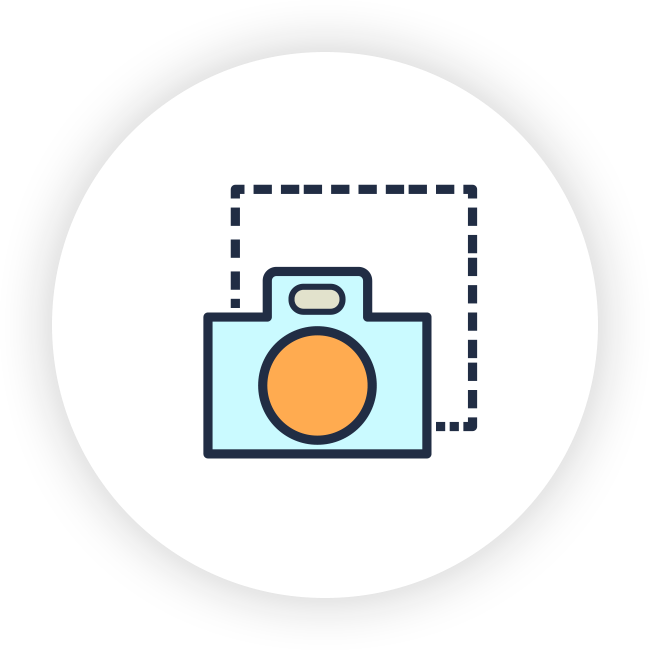 Backend Tip #2: Screenshot Retargeting Ads & Their Landing Pages
Backend Tip #2: Screenshot Retargeting Ads & Their Landing Pages

Your competitors are probably using some form of retargeting, it’s Google, Facebook, or something else. This might be in the form of offering you bonuses to take something previously offered in a webinar, after a video sales letter, after an email sequence or any other action which you didn’t complete to the end.
If you see these ads, make sure to screenshot the ad itself and the landing page it’s linked to. This will break down the offer and what action they want you to take.
Based on this you can re-create a similar landing page in your own funnel using Clickfunnels. You also get ideas on retargeting designs to offer your own customers.
NOTE: Don’t forget to save the URL of the landing pages too! These may come in handy in the future. I’d save them into a folder called “Retargeting Landing Pages”. You can have subfolders if you find multiple offers for different products.
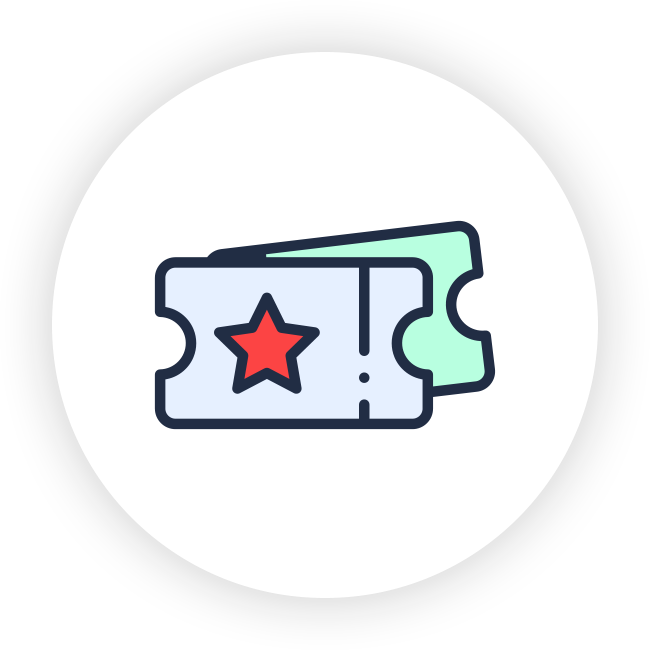 Backend Tip #3: High-Ticket Webinar Funnel Hacking
Backend Tip #3: High-Ticket Webinar Funnel Hacking
If you go through a webinar funnel with a somewhat high-ticket offer at the end of it, screen record the webinar and save a copy of it on your computer.
This shows you the slides, the script and the flow of the webinar. Most importantly, you’ll see them pitch the product and address the types of objections they handle. This works especially well for products being sold straight off a webinar funnel (which can be re-built right out of the box using Clickfunnels).
TIP: Again, save the order page link they tell you to go to. I’d screenshot the order page too as they might be time sensitive and can be taken down at any time.
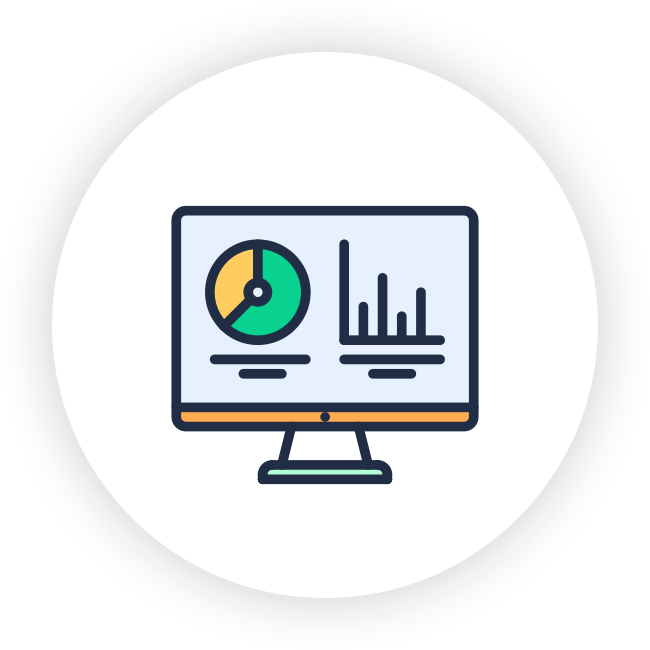 Backend Tip #4: Ask For Affiliate Metrics (Affiliate-Based Products)
Backend Tip #4: Ask For Affiliate Metrics (Affiliate-Based Products)
If your competitor’s products have an affiliate program, they’ll generally discuss the numbers they’re achieving throughout their funnel. This is a great opportunity for you to see what types of numbers they’re getting. Affiliate pages (coming soon) offer a wealth of information to entice people to promote their products – great news for us funnel hackers!
You can even re-build an affiliate page in Clickfunnels yourself if you also run an affiliate program too.
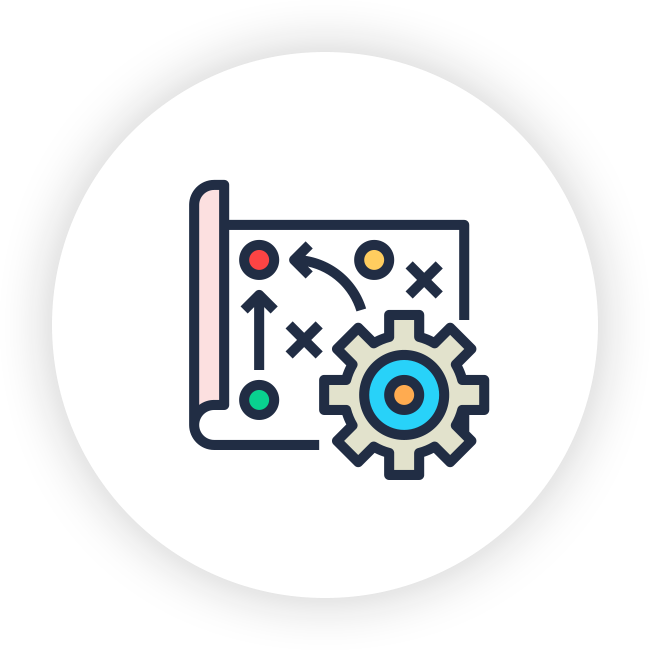 Backend Tip #5: Jump On A “Strategy Session”
Backend Tip #5: Jump On A “Strategy Session”
One of the biggest back end funnels is to get people into a strategy call. Being able to go through the process of your competitor’s sales call will give you insight into products they may not list publicly. If you get the chance, jump on the phone and take lots of notes while your competitor sells you over the phone. This gives you a glimpse into their strategies.
It may even be worth taking the product offer to see if that’s where their funnel ends!
If you want to learn more about how we ethically stole over $1M of funnel hacks from our competitors for under $100, check out the video below:
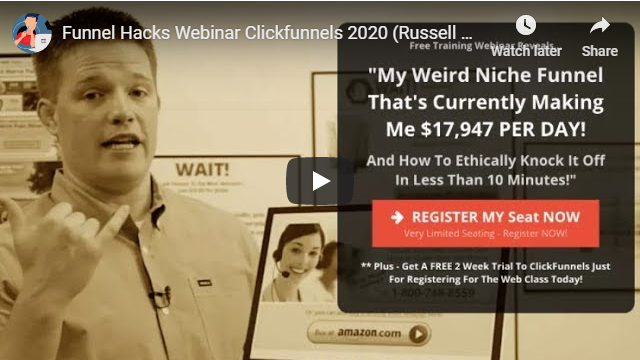
Types of Marketing Funnel Hacking: Three Examples
Now that you’re convinced that hacking your marketing funnels is the way to go, you might be wondering how to tailor this to your business.
Well, we’ve got you covered.
Funnel Hacking for Ecommerce: 2-Step Order Form & One-Time-Offer (OTO) Funnel
eCommerce entrepreneur Alison Prince wanted to see if she could teach her daughters to sell online, just like her.
She wanted a simple solution and her girls started selling pillowcases. And within about nine months, they grossed over $100,000 in revenue.
This is a very simple marketing funnel they used during Valentine’s Day.
They used a 2-step order form, sprinkled with some scarcity. They limited the inventory. They also made it a secret sale that was only available to their best customers.
The 2-step order form they used meant that even if a prospective customer doesn’t complete their purchase, they will have gathered the contact information. This way they can send the prospect an abandoned card email a couple hours later.
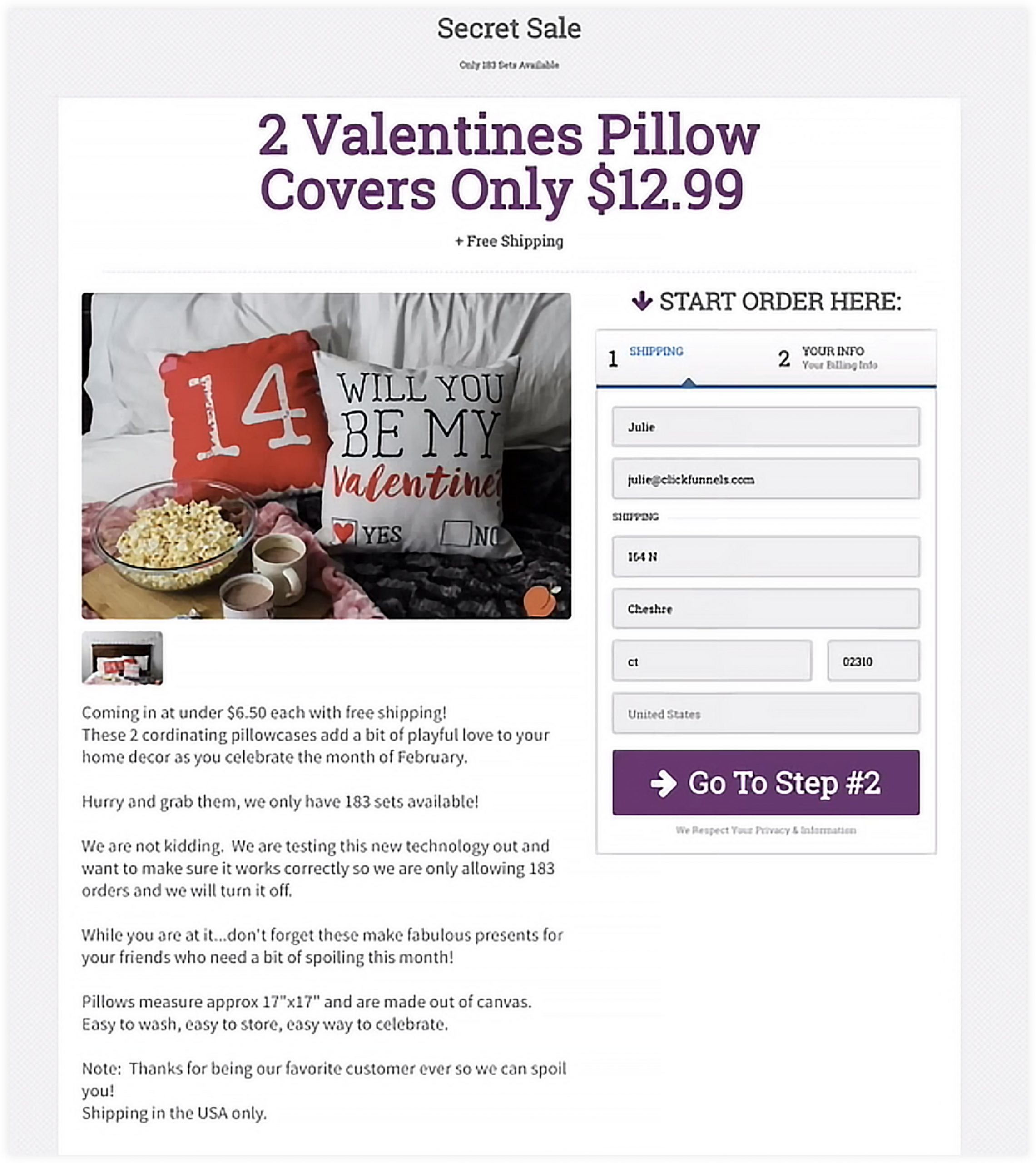
Before the customer checked out, though, they also offered a one-time offer (OTO) for St. Patrick’s Day pillowcases. While the Valentine’s covers were only $12.99, the OTO raised a customers’ cart value by $10.99 if they took the offer.

Out of the 46 people that purchased, 19 of them took the OTO. You can also see that the average cart value is $22.
In 24 hours they grossed over $1,000 on this simple sale.

Funnel Hacking for B2B Lead Generation: Survey Funnels
Logan Brown works at a company called the Universal Waste Disposal company in the B2B space. And before Clickfunnels, his company had zero leads online. They didn’t really know how to use the internet.
After his boss saw an episode of The Prophet that featured Russell Brunson, Logan’s boss gave him Clickfunnels to figure out how to use internet marketing to get leads into their business.
This is what he did.
Logan built a very simple marketing funnel, called a survey funnel.
In it, a visitor can request a quote by putting in what kind of service they needed. There’s also a little bit of information about who they are and what they do.

Then a pop-up box with a contact form comes next. The prospect puts in their name, their email, and any comments. Logan also included a phone number if the prospect wanted to call him right away.

And then all it has on the next page is a thank you page with a link to their physical product store.

If you click “Go To Store”, you can actually go over and purchase a recycling kit, for example.

This simple funnel averages 4-7 online submissions per week. If that number seems low, remember that in the B2B space, each customer can be worth it.
In fact, Logan said that they generated $100,000 in new revenue in the year he created this funnel.
Funnel Hacking for Affiliate Marketers: Bridge Funnels
At first, affiliate marketer and agency owner, Julie Stoian, had no idea what passive income looked like. She was so busy building websites, building marketing funnels, and running Facebook ads for her clients.
She started making about $4,000 a month in recurring passive income after working with a client. She eventually realized that if she started offering really cool bonuses to her clients who signed up through her Clickfunnels affiliate link, that she could really scale her passive revenue.
So she built what’s called a bridge funnel to automate this part of her business.

She gives people the option to join Clickfunnels, purchase Funnel Scripts, or Funnel Builder Secrets.

When they click on these links, an opt-in form opens up. Julie can then grab their email information first, then follow up with them later.

The form then redirects folks who use her affiliate link over to the software or the course that they’re purchasing.
These days she makes between $8,000 and $10,000 a month in passive revenue.
What It’s Like to Be a Funnel Hacker: Funnel Hacking Live Conference (FULL Documentary)
Before we wrap up, we want to tell you about an event that has fundamentally changed the internet marketing game: Funnel Hacking Live.
It’s been called “the rock concert of marketing events”. And we filmed a full-length documentary on it just so you can see what it’s like to be a funnel hacker. Grab the popcorn and check it out:
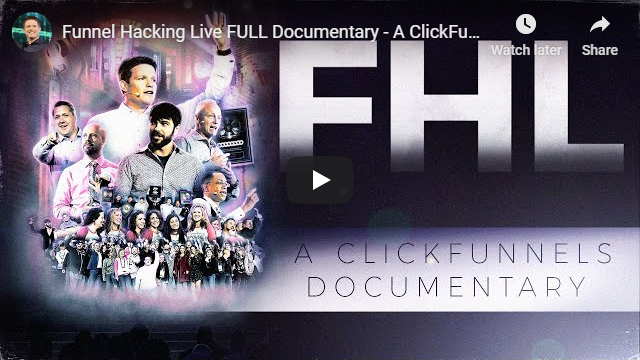
Ready to Hack Your Marketing Funnel?
Every business has some sort of marketing funnel, whether the owner knows it or not. More often than not, a business’ marketing funnel is clogged with inefficient processes that leave money on the table.
Funnel hacking — being able to take the best and highest converting elements from one business and replicate it in your own way — is the fastest way to plug those holes.
This is what really leads to faster wins and success … and ultimately more profit. With the tools, resources, and processes that we’ve outlined above, you should be able to get off on the right foot, to becoming a badass marketing funnel hacker.
Finally, don’t be frustrated or set back if you feel that overwhelmed at first (there’s a lot to take in). Go out. Sharpen your skills. You’ll become more confident in building a high converting funnel for your own business.
Who knows … maybe one day people will be hacking your marketing funnels!
>>>Join The One Funnel Away Challenge<<<


